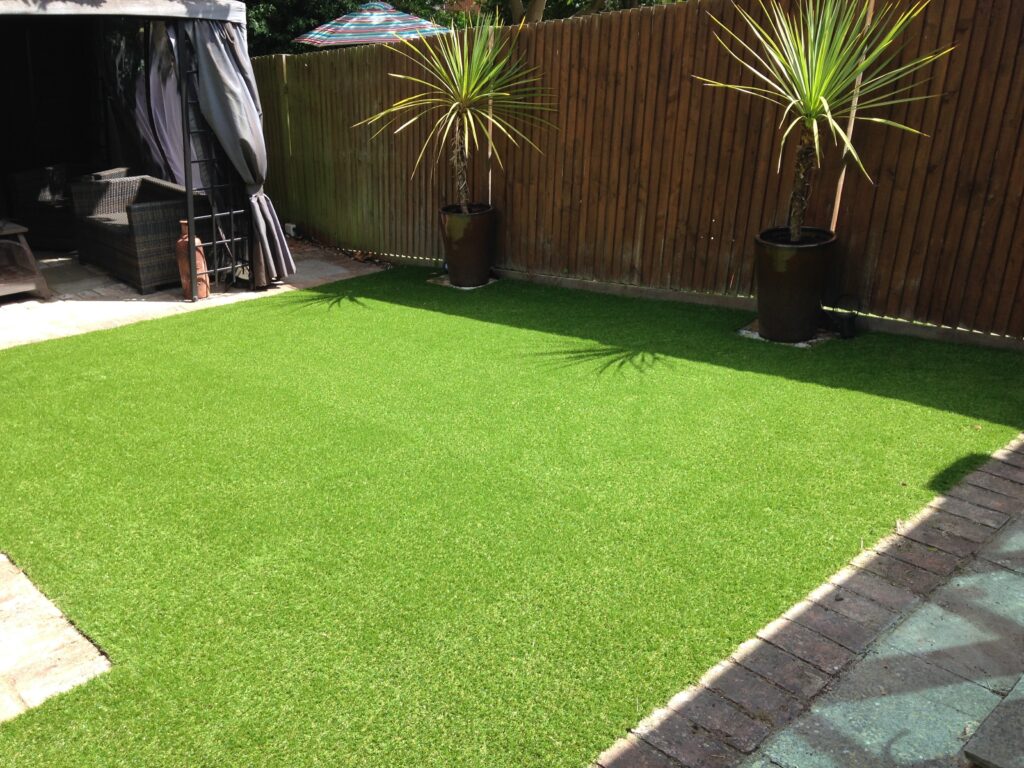What are Artificial Grass Mats Made of?
Artificial grass mats have been steadily improving in quality since they were first introduced, primarily because manufacturing technology has improved and the materials used in the process have also become better. There has never been a better time than the present to invest in a high-quality golf mat to help improve your golf game, and to help you score better on the golf course.

What are Artificial Grass Mats Made From?
The most commonly used materials in the manufacture of artificial grass mats are nylon, polypropylene, and polyethylene. Artificial grass has now been manufactured for around 50 years, and it has become much more authentic in its look and feel, because of the improved manufacturing methods and better materials used in making the product.
Polyethylene is the most popular material used for making artificial grass blades, and when used to produce artificial grass, it must be melted down and mixed with coloring agents and additives which are resistant to ultraviolet rays. Polypropylene is used to make the thatch layer of artificial grass, which cushions the turf and provides a supportive layer.
A thatching machine is responsible for adding the grass blades onto a turf backing, and this secures them snugly to the backing layer. Nylon is extremely robust, and is frequently used on golf driving mats, because it has a very high tolerance to numerous golf swings and the abuse that normally happens with practicing from a mat.
Is Artificial Grass Safe?
You might be surprised to learn that in many ways artificial grass is safer for children than real grass is. Real grass can actually be toxic for children, if it has been sprayed with chemicals or pesticides, and a curious child might choose to ingest a few blades of grass, or to play in it and have it brush against their skin. Artificial grass and golf mat grass contain none of these fertilizers or chemical additives which might be toxic for owners or their children.
Real grass also has the problem of wearing thin and creating holes or bare spots which can cause slippage for children, especially after a rain has added moisture to the ground. Even after continuous usage, artificial grass and golf mat grass will not develop such bare spots or holes, which means they are far less likely to induce slipping and tripping among children.
Artificial grass also drains very well, so even after a moderate rainfall, it will not hold water that might present a slipping problem for youngsters. It’s also true that natural grass can trigger a number of allergies, and some pretty unpleasant symptoms which result. Artificial grass is both non-toxic and non-allergenic, so it won’t be nearly as likely to trigger symptoms of asthma or allergies in your child.
How Long Will Artificial Grass Last?
Due to the advances in technology used to manufacture artificial grass, it has been steadily gaining in its expected life cycle, up to the point where it can now be expected to last a very long time. Of course, all this will depend on how well it is maintained, and how much wear and tear it’s subjected to. Generally speaking, artificial grass is capable of withstanding serious abuse and high-traffic volume, although naturally these will contribute to shortening its lifespan.
In most situations, almost no maintenance is necessary for artificial grass, but there are still some things you can do which will extend its life cycle after installation. If you are a conscientious homeowner who takes good care of their artificial grass, you can expect that it will last a minimum of 20 to 25 years, and in most cases probably more than that. Realistically, if you were to install artificial grass around your entire property, it would probably still be in place when you decided to sell the house and move on to some other residence.
Artificial Grass Mats for Home Use
Artificial grass such as that used in the construction of golf mats is extremely durable, and is also non-toxic and non-allergenic and frequently used on driving range mats for golf. That makes it very useful for improving your golf game, while also being very safe for usage around your home. If you’re ready to improve your golf game through regular practice at home, contact us at Rawhide Golf Ball Company, so we can discuss some of our high-quality golf mats with you.













